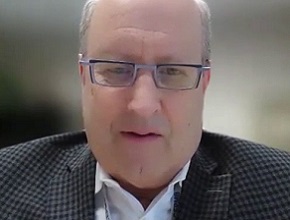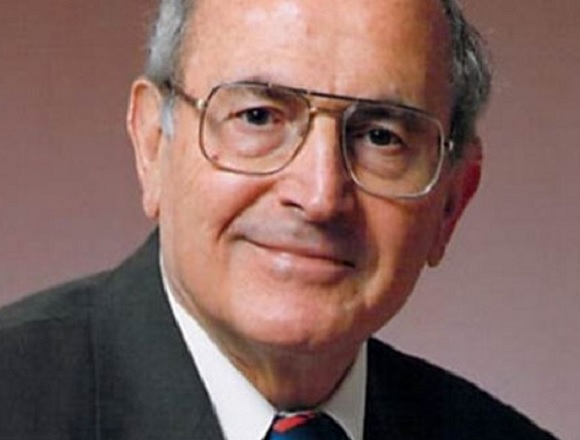Dr Subodh Verma, a cardiac surgeon-scientist, professor at the University of Toronto, and Canada Research Chair in Cardiovascular Surgery joins Dr Roman Jaeschke to discuss the evolution of pharmacologic treatment in diabetes and obesity over the last years, including metformin, SGLT-2 inhibitors, and GLP-1 receptor agonists.
Contents
- Introducing Dr Subodh Verma
- Dr Subodh Verma’s professional career path
- The story of metformin, part 1
- Revolution in evolution: first-line diabetes drugs
- The story of metformin, part 2
- More on SGLT-2 inhibitors’ mechanisms of action
- “Medical bariatric surgery”: GLP-1 RA, GIP, triple G
Transcript
Roman Jaeschke, MD, MSc: Good afternoon. Welcome to another edition of McMaster Perspective. It opens a series of interviews with opinion leaders in a variety of medical fields.
Today we’ll be talking to an expert in actually quite a bit of them—in cardiovascular surgery, cardiology, metabolic diseases: Professor Subodh Verma from the University of Toronto. He is not only a cardiac surgeon but also a professor of pharmacology and toxicology, Canada Research Chair in Cardiovascular Surgery, and coauthor of numerous practice guidelines on cardiac and metabolic diseases.
Professor Verma, I would like to start with a slightly unusual question. We are talking about McMaster Textbook of Internal Medicine, we are talking about medicine, we are talking about metabolic diseases, and you are a cardiac surgeon. What’s your career path that led to this point?
Subodh Verma, MD, PhD: Well, first and foremost, let me say that I’m really honored to be part of your panel and honored to be interviewed. I’ve always looked up at McMaster University and this platform as being really the go-to place for where evidence-based medicine, at least in Canada, and globally, has had such a strong footprint.
Just to recap my journey… My journey started with an undergraduate degree in pharmacy. I was a pharmacist first, and following that I pursued a PhD in cardiac pharmacology at the University of British Columbia. And it was a very interesting story in that my PhD supervisor, Professor John McNeill, was also my father’s PhD supervisor. And he also was a pharmacologist, so it was really serendipity in many ways that I ended up training in pharmacology with the same person who actually trained my father.
My work early on in my PhD started around metabolic medicine. In fact, my initial graduate work focused on the role of metformin in improving cardiac structure and function in experimental diabetes. And subsequent to that, the rest of my graduate work really focused on the interface between vascular biology, endothelial dysfunction, and insulin resistance in the context of diabetes.
That was really the beginnings. Following that I went to medical school at the University of Calgary. During my medical school I actually did a joint MD postdoctoral fellowship with a gentleman called Todd Anderson, who is now the Dean of [the Cumming School of] Medicine at the University of Calgary. My work there was really focused on translational vascular biology in humans, looking at the impact of insulin resistance—again, diabetes, other metabolic derangements such as polycystic ovarian syndrome—and how they actually interface with the vasculature by really testing endothelial function in humans, going from an experimental angle to, now, a real translational angle of assessment of vascular tone in humans in the metabolic arena.
Following that I moved to Toronto where I did my cardiac surgery training and, again, surrounded by wonderful mentors during my cardiac surgery residency at the University of Toronto, I actually was also cross-appointed at that point as an assistant professor in the Department of Pharmacology at the University of Toronto. It’s a very unusual situation where you’re a resident still learning how to operate, learning the ropes of surgery, but at the same time I actually also had an appointment, so I was able to run a lab, I had operating grants. It really taught me the skill of being a clinician-scientist early on through that process.
Once I finished my training I came on staff at St Michael’s Hospital at the University of Toronto where I started off as an associate professor, then started my lab, a translational lab, a basic science human translational lab, and then the clinical trials group. And that’s been my journey in a nutshell.
Roman Jaeschke: It sounds like you are opposite to today’s high-level specialization in just one small area, but that probably puts you in the unique advantage point as well. That’s fantastic.
But you’re mentioning metformin and diabetes. I wonder if I can use this opportunity to ask a very short question: could we still say that metformin provides some cardioprotective effect for people with diabetes? The reason why I’m asking is that [according to] the UK Prospective Diabetes Study (UKPDS) I believe in my youth, we were told that it does, and then, with the preponderance of different new classes of medications, metformin kind of kept coming down. What should we say in our McMaster Textbook of Internal Medicine these days?
Subodh Verma: Well, that’s a great question. I’ve had a 30-year affair with diabetes....
Roman Jaeschke: That’s why I’m asking.
Subodh Verma: Quite frankly, it’s been something that has been near and dear to me. And to fast-forward the story to just 2 days ago, the American Diabetes Association (ADA) had its annual meeting in San Diego. I think for the first time now we can say that metformin is no longer the first-line therapy for people with type 2 diabetes and that has changed over the last several years. There’s been a lot of data supporting the use of the novel antihyperglycemic agents—sodium-glucose transporter 2 (SGLT-2) inhibitors, glucagon-like peptide 1 (GLP-1) receptor agonists, and now dual GLP-1/glucose-dependent insulinotropic polypeptide (GIP) receptor agonists. And these drugs have provided cardiovascular benefit in terms of protection against vascular events, heart failure (HF), renal events. But metformin’s evidence base has been one that has been associated with a lot of emotion and it’s been a very difficult divorce, right?
Roman Jaeschke: I agree.
Subodh Verma: Sure, it’s cheap, it’s inexpensive, and it works to lower hemoglobin A1c (HbA1c), but the cardiovascular/renal protection data with that is minimal. Therefore I would say that today, in my opinion, that no longer really is a requirement as a first-line therapy.
Roman Jaeschke: Okay. I was planning to ask this question much later in our interview, but let’s jump into that right away. When you are talking about first-line drugs for diabetes, probably we could face it in one of the revolutions that occurred over the last few years. And you lived through this revolution...
Subodh Verma: That’s right.
Roman Jaeschke: And you contributed to this revolution. I wonder if we could talk for a moment about the big changes at the junction of cardiovascular [disease] and diabetes over the last years. Changes that could parallel things like in the past aspirin in cardiovascular diseases or angiotensin-converting enzyme inhibitor (ACEI) use, or thrombolysis. I lived through all those revolutions. What is the current revolution and how did you contribute to it?
Subodh Verma: Thank you. As you were speaking, I was going down the memory lane of the last decade of this evolution and revolution in the cardiometabolic phase. And I think, as you all and your viewers are aware of, diabetes remains a recalcitrant problem. It’s a burgeoning burden globally. And the numbers... There’s no respite that is seen here, the numbers are projected to grow faster and more furious over the next several years.
The question has always been: “Are drugs that lower sugar, or HbA1c, really protective against microvascular/macrovascular complications?” But where the rubber hit the road really was the tension that these agents may not necessarily reduce macrovascular events, cardiovascular events.
I think the evolution, or revolution, really started when the Food and Drug Administration (FDA) came out and said that pharmacologic agents or drugs that lower sugar will need to demonstrate in large clinical trials that they’re at least safe from a cardiovascular standpoint. And that FDA guidance in 2008 really marked the beginning of a new day for the whole field. I still remember the conversations at meetings saying: “This is really not required. Do we really need to show that drugs that lower sugar are safe? Is safety just the bar that we want to reach here?”
But it’s quite interesting how this has evolved from this discourse that used to be. As long as the drugs showed that they are safe from a cardiovascular standpoint, we don’t need anything beyond that because we know that lowering sugar is good for the microvascular endpoints. We’ve got other therapies for macrovascular disease and therefore this will not be required. And it just reminds many of the students, hopefully, who view our conversation today that there is no substitute to good science. There is no substitute to good trials, and dogma only leads to disaster. And therefore going out and saying “We will do the right trials and we will actually comply with the guidance” actually can only make us smarter.
And that’s what it did. The trials, large trials have now been done that informed us that dipeptidyl peptidase 4 (DPP-4) inhibitors are wonderful drugs to lower sugar but are entirely neutral from a cardiovascular standpoint, potentially renal standpoint. We’ve learned that SGLT-2 inhibitors, which have probably been the most serendipitous story of them all, are not just the agents that lower sugar, but actually prevent HF. They treat HF with reduced and preserved ejection fraction (EF). They prevent and treat renal disease irrespective of glycemic status.
I really just look back to 8 years ago when the field started and I cannot fathom how fast and how furiously we’ve moved this field forward. And it was really my great good fortune to be on the steering committee of all of the 5 large trials that actually reported the use of SGLT-2 inhibitors in the treatment of HF with reduced/preserved EF and worsening HF.
And then there came the story of the GLP-1 receptor agonist. Nobody would have thought that we would have such a formidable strategy to reduce weight and really cause metabolic reprograming, if I may, [which] a GLP-1 receptor agonist and now a GLP-1/GIP receptor agonist can achieve.
And very, very soon we’ve seen the synthesis of all of that information into new guidelines that have actually positioned these agents now on an individualized basis to say if you have people with diabetes, if they have multiple risk factors or renal disease, then either one of these strategies should be prioritized. If they have HF, SGLT-2 inhibitors should be prioritized. If they have atherosclerosis, GLP-1 receptor agonists should be prioritized. If the weight is a driver, then use GLP-1 receptor agonists.
Over the last decade or so one of the areas of many that we focused on has not only been in the clinical trials arena of bringing this information together, both from the SGLT-2 inhibitors’ side and the GLP-1 receptor agonists’ side, but also understanding the basic and translational mechanisms through which the benefits of these agents appear to occur. That has been just as rewarding for me to see the science at the bedside, at the bench, and then, of course, look at how that translates in translational randomized trials, and then to look at the impact that these drugs have had on changing guidelines. So it’s just been a really wonderful story.
Roman Jaeschke: That’s a fantastic journey and thank you for reminding us about it. As those new drugs kept coming up, I was hoping I will never need to learn new names. They keep coming.
You mentioned that if the person has diabetes and has risk factors, you could look at whether those risk factors are renal, weight, or cardiovascular. I guess I had a little bit of a loss on the electronic exchange here… You mentioned obviously with obesity GLP-1, or GIP now, or the glucagon receptor could start to play a role. If you have kidney disease, it would be SGLT-2. If it was HF, it would also be SGLT-2, correct?
Subodh Verma: That’s right. Our Canadian guidelines have demonstrated tremendous leadership in this regard and we have wonderful guidelines that have broken down the matrix, very similarly to an editorial that I wrote in The Lancet, by the way, entitled “Pump, pipes and filter.” [doi:10.1016/S0140-6736(18)32824-1] And really, [it is] the reminder that in diabetes we care about the pump, ie, HF. In diabetes we care about the pipes, ie, atherosclerosis. And in diabetes we care about the filter, ie, renal disease. And that’s not just germane to diabetes. It really spans the entire spectrum of the heart, the pipes, and the kidney.
When you actually look at that table and ask yourself how I should prioritize SGLT-2 inhibitors or GLP-1 receptor agonists, what is incredible is you look at the new guidelines and you say “Where’s the word sulfonylureas? Where the word metformin?” and they’re really missing from that table. You can’t go wrong by choosing one of the above. And then I think the minutia is basically picking which one is specific for what cause. At the end of the day, my opinion is that for the vast majority of people with diabetes some sort of combination of these two strategies is actually going to be a dominant one to reduce morbidity and mortality.
Roman Jaeschke: I’m looking from the perspective of a mass of patients who exist, in lower-income countries as well: those drugs, those novel drugs presumably carry a respectable price. If your patient has no other major risk factors—mind you, it’s probably difficult to find such patients these days—and if metformin is the only affordable or easily affordable [drug], is that acceptable to start with metformin and to see what happens or to add the other drugs as presumably they will become more prevalent and less expensive?
Subodh Verma: Absolutely. I think we’ve learned a lot from one of the real mavens in the field, from McMaster, Professor Hertzel Gerstein. Actually, he’s a great friend of mine and a wonderful colleague. I actually just saw him a few days ago and he has reminded us that the concept that glucose is toxic is unequivocal. We have to understand that the relationship between hyperglycemia and microvascular complications is really unequivocal.
And therefore if someone is in a cost-constrained environment where the drugs are not generic yet and where they have to make important choices, then I completely agree with you that lowering hyperglycemia with metformin would be absolutely appropriate. And even using a DPP-4 inhibitor in that context would also be appropriate to reduce renal and retinal, neuropathic kinds of complications. But here we’re talking about reductions in macrovascular events—HF and end-stage renal disease—which we believe are bigger issues that can be tackled in addition to the microvascular issues.
Roman Jaeschke: Well, as usually, the first mantra of evidence-based medicine is that it’s not evidence that makes decisions but people do. And both patients and health-care systems will have to do it.
Subodh Verma: Which is great that you bring this up, because I was speaking with my fellows earlier today and the concept of compliance and adherence to therapy came up. I reminded everybody that we don’t talk about compliance anymore, we talk about adherence. And adherence is—as you said—a 2-way, 3-way, 4-way street, right? It’s not you, the doctor, telling the patient “You will comply” in a paternalistic kind of fashion. It is really understanding what the patient’s preferences are, what the pill burden is, what the economic environment is. Our role as physicians is one part of the overall picture of adherence, which is really complicated but remains the Achilles heel at the end of the day for whether people benefit from therapies or not.
Roman Jaeschke: Professor Verma, the question that puzzles me frequently since I first interviewed Hertzel Gerstein. It was like 5 or 6 years ago and he told me about all those new classes of drugs. I heard about SGLT-2 inhibitors for the first time from him at that time. How does it [work]? Because this was the side effect in diabetic trials that people had less HF. How does SGLT-2 influence the cardiovascular thing other than lowering glucose? How can it do it through a different mechanism than glucose lowering itself?
Subodh Verma: Yes, thank you for that. It’s been a topic of great interest of ours and to simplistically put it, we have a better understanding than we did but we don’t have one mechanism that I can point to that is a dominant one. Again, let me recount some of the pathways that we’ve explored and where we think the data are currently.
We know that these agents... The mechanism or the mechanistic basis of these must help explain at least 3 or 4 very important clinical observations. The first is that they prevent and treat HF. Not everything that works in prevention works in the treatment, and therefore the mechanism must understand that clinical context.
Second, the benefit occurs very fast within the context of a few weeks. Third, the benefit is entirely agnostic of baseline HbA1c or glycemic control. That also is a very unique pathway if it doesn’t actually depend on what somebody’s glycemic status is or what somebody’s renal status is.
And finally, it is agnostic of the EF. As you know and as your viewers are aware of, a heart with a 20% EF, with reduced EF, that’s dilated, that’s apoptotic, that actually has poor ventricular function, has a very different Frank-Starling curve compared to a ventricle that is 70% hypertrophied and has HFpEF. The loading and unloading conditions of those ventricles are very different and the pathophysiology of HF is very different.
How could a therapy have such great bandwidth across all of these strata? When thinking of that, there have been several mechanisms that have been put forward and several have been discounted. There are the so-called indirect mechanisms. The indirect mechanisms include natriuresis, diuresis that is often talked about. The indirect mechanisms also include inhibition of the sympathetic nervous system. I think your viewers are aware that the kidneys are a gateway to sympathetic control, and renal afferent sympathetic nerves really carry a lot of the sympathetic stimulations. By attenuating that pathway, there’s a reduction in sympathetic activity.
There’s an increase in erythropoietin (EPO), and our group was the first one to demonstrate this a few years ago. We believe that this is now emerging as a dominant pathway of how these drugs work is that they cause an increase in EPO, which is responsible for an erythropoietic response. People originally thought that the hemoconcentration is a reflection of diuresis, but that’s not the case. There’s a primary erythropoietic response, and that increase in EPO, in our opinion, is a really important driver that may explain the bandwidth because, irrespective of whether you have HFrEF or HFpEF, you have an energy-starved state in HF, irrespective of where you’re at [there] is always energy starving.
So increasing EPO may actually drive that benefit. It also helps contextualize how these drugs work, and they cause some degree of renal hypoxia early on. That’s why you get a small drop in the estimated glomerular filtration rate (eGFR) and that may be the trigger for renal EPO to be produced. That is something we feel strongly about because in the EMPEROR program, where we looked at the outcomes of patients with empagliflozin and HFpEF and HFrEF, if you do a proteomic analysis, you’ll find that of the 3 or 4 molecular targets that seem to really be linked to the outcomes EPO is one of them and transferrin receptor signaling is a second one of them. So these drugs seem to really interact with EPO, iron metabolism, and iron signaling.
In addition to that, there are some direct mechanisms, including the effects of these drugs on ion channels in the heart, the stimulation that what we believe now is called a transcriptional fasting paradigm. So when people fast—there’s a lot of excitement around alternate-day fasting, fasting, etc—we know that there is a transcriptional paradigm that is unleashed when you fast and that is characterized by an upregulation of sirtuins and other pathways. SGLT-2 inhibitors seem to mimic this transcriptional paradigm, which is then associated with an increase in autophagy, which is a natural protective mechanism for multiorgan survival. Those are some of our initial thoughts as to how these drugs might be working, but it’s much more than just being a diuretic.
Roman Jaeschke: Well, these are your initial thoughts. I would not ask you to expand on that because I may well not understand. But anyway, it is clearly fascinating.
Knowing the breadth of your involvement, let me come back to another class of drugs, which are those... I was just reading today something that called them Ozempic-like drugs, simply because it’s easier to pronounce them. But these are GLP-1 receptor agonists and GI... How do they call them?
Subodh Verma: GIP.
Roman Jaeschke: GIP and now glucagon receptor–influencing drugs. When I searched it, I’ve seen an entry from 2021 saying “Breakthrough in weight management” and this was about semaglutide, or Ozempic. Then it was 2022 and another breakthrough with the GLP-1/GIP combination. And a few days ago we’ve probably seen the report from the ADA about the triple therapy.
Subodh Verma: Triple G, yeah.
Roman Jaeschke: Where do you think it’s going? How often will we get those breakthroughs?
Subodh Verma: I think the field of this—gut hormones or incretins and how they regulate metabolism—is really at the inflection point, if I may. Semaglutide and other GLP-1 receptor agonists have transformed the field of obesity, overweight, and diabetes. Now there are HF trials and I’m involved in one of them called STEP-HFpEF, which was looking at the effects of semaglutide inpeople with HF and a preserved EF without diabetes. Those trial data have not been reported yet.
There are other trials with the dual agonist GLP-1/GIP and tirzepatide, or Mounjaro, which is the brand name approved in Canada, approved globally for the treatment of people with diabetes and overweight or obesity. The cardiovascular outcome trials are still pending. And then we have the triple agonists, which actually show even more promise for metabolic control and weight, but the cardiovascular outcomes for those trials are still ongoing.
In a world where obesity and overweight seem to be at the underpinning of many of the metabolic derangements and HF outcomes that we see today, in addition to the role that overweight and obesity play in terms of mechanical load on various other systems, I think that we now have a potential medical bariatric option, if I may, for weight reduction. It’s a welcome addition in our armamentarium against metabolic diseases.
Roman Jaeschke: As you were talking, I was thinking about two things. You mentioned at the start that diabetes is developing or snowballing incredibly through the world and I wonder if those drugs can actually stop this fairly catastrophic increase in morbidity. But the other thing that probably nobody has an answer to, so I will ask you, is how the body may react to losing 25% to 30% of body weight? What should we be looking for effectively looking at safety of those medications?
Subodh Verma: I think you have to look for a pair of new pants and new clothes...
Roman Jaeschke: Okay, for sure.
Subodh Verma: But putting that aside, I think it’s a really good point. These are quite large, dramatic reductions in weight. Are they all beneficial? We know that not all of the weight reduction strategies in the past have yielded positive clinical trial outcomes from a morbidity and mortality standpoint per se. And therefore I am really happy to see that these trials are large trials that are evaluating all the aspects of weight reduction—albeit in short-term trials, 3 to 5 years—with respect to the outcomes of cardiovascular, renal [health], but also more importantly cancer outcomes, safety outcomes, and things of that nature.
What kind of fat do they target? Do they target visceral fat? Do they target subcutaneous fat? Do they target both, which appears to be the case? That also appears to be of great interest. Do they lead to a change in fat, from white to brown fat? Do they actually change metabolic fat? Again, important questions.
But in addition to what we’re going to learn in the short term and the rapid adoption of these therapies for weight reduction and cardiometabolic control, long-term surveillance studies, long-term evaluation of safety and efficacy that always occurs in phase IV types of studies would also be quite imperative.
Roman Jaeschke: Professor Verma, I have one last comment. I don’t know how you find time to operate, with all the things that you do otherwise, but I want to thank you very much for a very informative and very nicely and practically presented rundown of the history of the last 20 or 15 years of cardiovascular and metabolic diseases [research]. I really appreciate your time and I hope to host you in the future.
Subodh Verma: Thank you. It was really my great honor. As you said, as a full-time heart surgeon, it’s a great honor to take care of people in the operating room and also work with such a dynamic team that actually keeps me on my feet and helps me and others propel the field of metabolic medicine.
Roman Jaeschke: It sounds like they are doing a very good job. Thank you very much. Goodbye.
Subodh Verma: Thank you. Bye-bye.
 English
English
 Español
Español
 українська
українська











